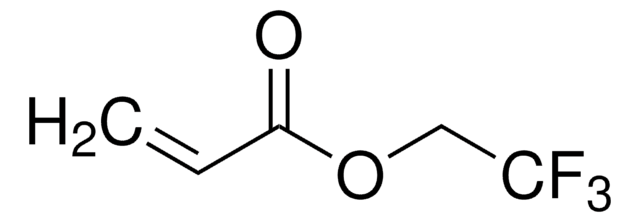推薦產品
product name
聚乙二醇甲基醚, average Mn 10,000
蒸汽密度
>1 (vs air)
蒸汽壓力
0.05 mmHg ( 20 °C)
形狀
chunks
powder or crystals
分子量
average Mn 10,000
mp
60-65 °C
Mw/Mn
≤1.2
Ω-end
hydroxyl
α-end
methoxy
儲存溫度
−20°C
InChI
1S/C3H8O2/c1-5-3-2-4/h4H,2-3H2,1H3
InChI 密鑰
XNWFRZJHXBZDAG-UHFFFAOYSA-N
尋找類似的產品? 前往 產品比較指南
儲存類別代碼
10 - Combustible liquids
水污染物質分類(WGK)
WGK 1
閃點(°F)
415.0 °F - closed cup
閃點(°C)
212.80 °C - closed cup
分析證明 (COA)
輸入產品批次/批號來搜索 分析證明 (COA)。在產品’s標籤上找到批次和批號,寫有 ‘Lot’或‘Batch’.。
客戶也查看了
文章
Progress in biotechnology fields such as tissue engineering and drug delivery is accompanied by an increasing demand for diverse functional biomaterials. One class of biomaterials that has been the subject of intense research interest is hydrogels, because they closely mimic the natural environment of cells, both chemically and physically and therefore can be used as support to grow cells. This article specifically discusses poly(ethylene glycol) (PEG) hydrogels, which are good for biological applications because they do not generally elicit an immune response. PEGs offer a readily available, easy to modify polymer for widespread use in hydrogel fabrication, including 2D and 3D scaffold for tissue culture. The degradable linkages also enable a variety of applications for release of therapeutic agents.
Designing biomaterial scaffolds mimicking complex living tissue structures is crucial for tissue engineering and regenerative medicine advancements.
我們的科學家團隊在所有研究領域都有豐富的經驗,包括生命科學、材料科學、化學合成、色譜、分析等.
聯絡技術服務




